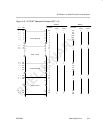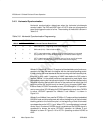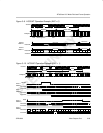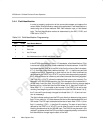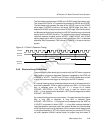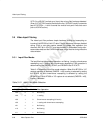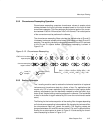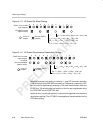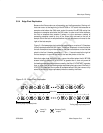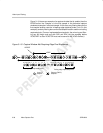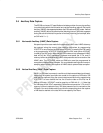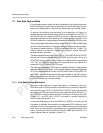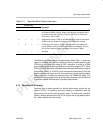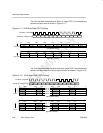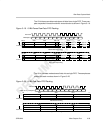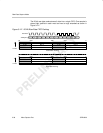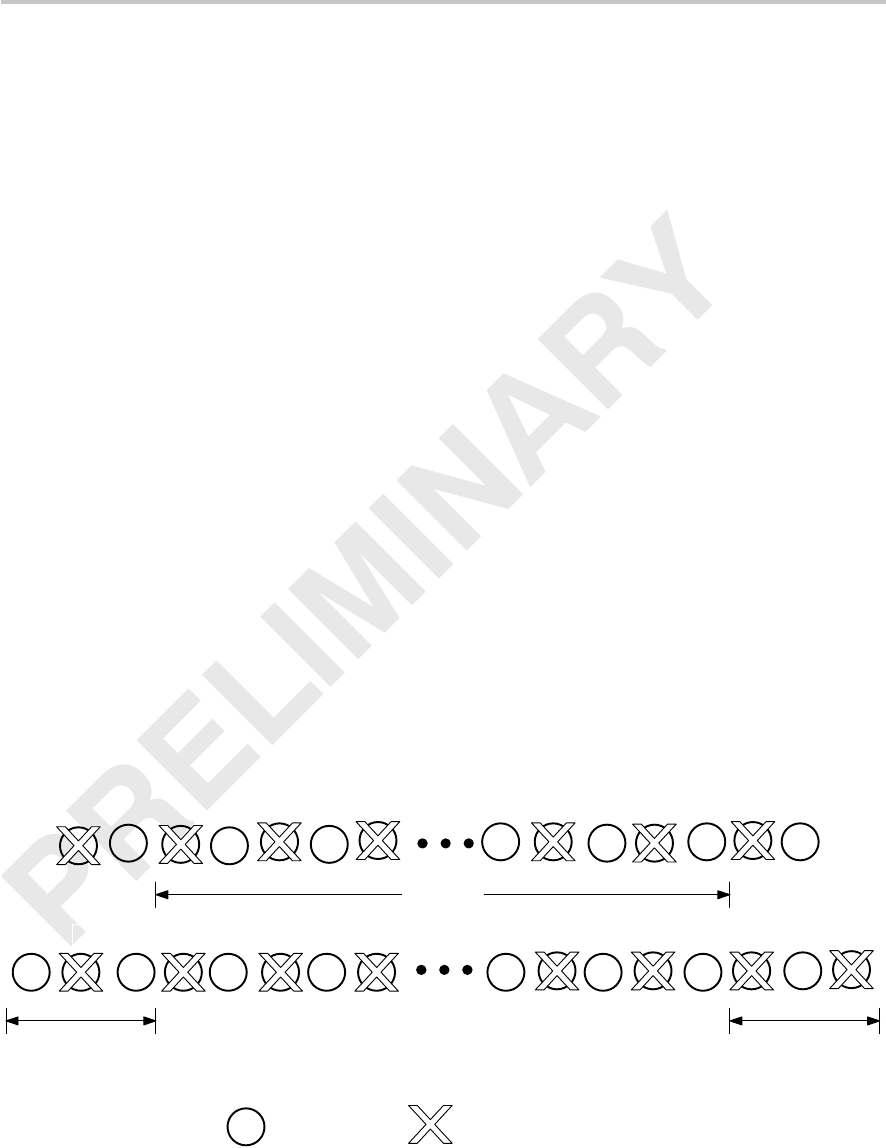
Video Input Filtering
3-29Video Capture PortSPRU629
3.5.4 Edge Pixel Replication
Because the filters make use of preceding and trailing samples, filtering arti-
facts can occur at the beginning of the BT.656 or Y/C active line because no
samples exist before the SAV code, and at the end of the BT.656 active line
because no samples exist after the EAV code. In order to minimize artifacts,
the first m samples after sample 0 (where m is the maximum number of
preceding samples used by any of the filters) are mirrored to the left of
sample 0 and the last m samples before the last sample are mirrored to the
right of the last sample.
Figure 3–15 shows edge pixel replication assuming an m value of 3. Sample a
is the first sample after the SAV code. Therefore, samples b–d are mirrored to
the left of sample a to provide values for the filter calculations on the first few
pixels in the line. Likewise, samples n – 1 to n – 3 are mirrored to the right of
the last sample n to provide values for the last few pixels on the line.
Note that edge pixel replication only comes into effect when the full BT.656
stream is being captured. If VCXSTART is greater than 0, then only some of
the leading edge replicated pixels are used by the filter. If VCXSTART is greater
than m, then none of the leading edge replicated pixels are used. Similarly, if
VCXSTOP is less than the number of samples before EAV, then none or only
some of the trailing edge replicated pixels are used by the filters.
Figure 3–15. Edge Pixel Replication
a
Luma (Y)
sample
–
Chroma (Cb/Cr)
samples
–
b c d ed c bn – 1nn – 1n – 2n – 3n – 4n – 3n – 2
abcdeSAV n – 1 n EAVn – 4n – 3n – 2
Leading edge replicated pixels
Trailing edge replicated pixels
Active line



